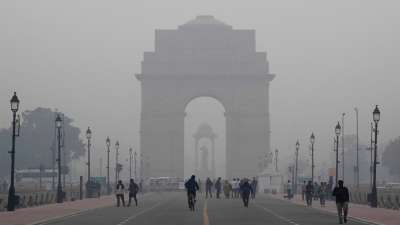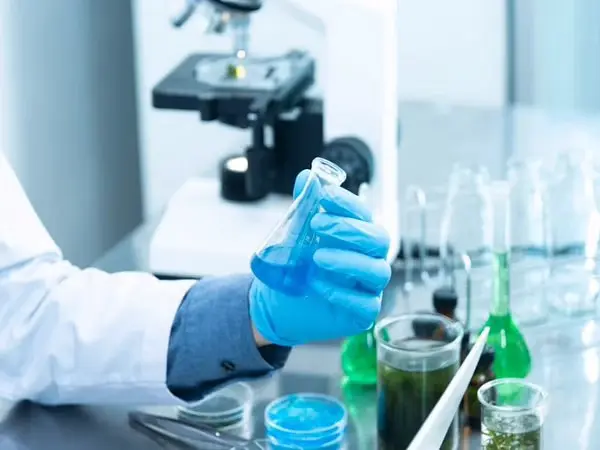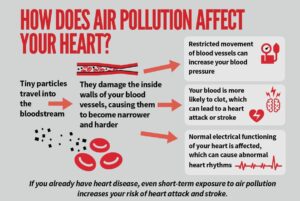
The air quality in several areas of Delhi remained in the severe category on Saturday as a thick toxic smog engulfed the city, resulting in poor visibility. For the third consecutive day this week, the air quality in Delhi was recorded in the severe category as per the CPCB (Central Pollution Control Board), with the Air Quality Index (AQI) at 504 on Saturday.
In addition to humans, animals and birds are also affected by the increased air pollution in the national capital.
On the effect of pollution on birds, veterinarian Haravtar Singh said since the city air turned fouler, about 10 birds were brought with breathing problems. “Just like us humans are facing problems due to pollution, even birds, especially pigeons, are being affected. Pigeons mostly inhabit the national capital. Every day, about 50 different types of birds are brought to our hospital in an injured state or suffering from some problem or the other. Ever since pollution has gone up by leaps and bounds, 8 to 10 such birds have been brought in with breathing problems,” Singh said.
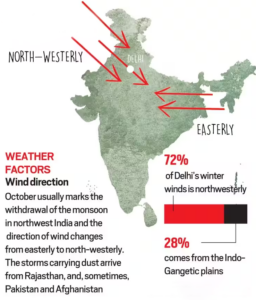
According to doctors, for any healthy person, a recommended AQI should be less than 50, but these days the AQI has spiked beyond 400, which could prove fatal for those suffering from lung-related diseases and even poses a risk of lung cancer. Meanwhile, Delhi Environment Minister Gopal Rai wrote to Union Minister Bhupender Yadav, requesting him to ban the entry of vehicles non-compliant with BS-VI norms into Delhi from neighbouring states in Delhi-NCR. He also requested an emergency meeting of neighbouring states’ environment ministers. Rai said, “Looking at the rise in the level of pollution in the last two days, construction has been banned in Delhi since yesterday.
Today there has been an improvement in the level of pollution as compared to yesterday. The situation is still serious. I am writing to the Central government requesting that the Union Environment Minister call an emergency meeting of Environment ministers of all five states immediately. The orders of CAQM are not being implemented in other states. Rules are being made, and CAQM is giving directions, but in the whole NCR, rules are being violated. This is the problem of the whole of North India.”
Voicing concerns over rising air pollution in the national capital, a senior Lung specialist at Medanta Hospital, Gurugram, Dr Arvind Kumar, said the effect of an air quality of around 450-500 is tantamount to consuming 25-30 cigarettes in a day.
“People across all age groups are adversely affected by air pollution. You might wonder how an unborn child is affected as it is still in its mother’s womb. When the child’s mother is breathing, the toxins go to her lungs and through the lungs, they make their way deeper through her veins and through the placenta, they reach the child and the foetus and cause damage. When the child is born, he starts breathing the same air. Our air quality currently is around 450-500, which is equal to consuming about 25-30 cigarettes a day in terms of damage to the body. People exposed to this toxic air can develop all sorts of breathing problems,” Kumar said. “From head to toe, there’s no organ in the body that escapes the ill effects of air pollution.
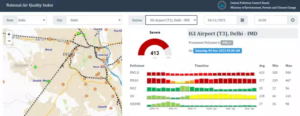
However, there is no evidence to suggest yet that it causes obesity or asthma. When a person is obese and is exposed to air pollution, the chances of asthma become many times higher,” he added. Dr Neeraj Kumar Gupta, Pulmonologist, HoD, Safdarjung Hospital said, “The AQI crossing 400 and going into the severe category could be mainly attributed to factors like combustion. It could also be blamed on transportation, burning of agricultural waste, and also due to construction-related activities and industrial activities. We are responsible for it. It’s our responsibility to reduce it. Exposure needs to be avoided as pollution is directly responsible for many diseases.”
“It is also responsible for affecting the health of children. The vulnerable population includes the elderly, small children, pregnant women, or people already having some respiratory conditions. They need to avoid exposure to pollution as much as possible. They should confine themselves to their homes. If they have any symptoms, then they should visit their doctors and seek treatment immediately,” Gupta added.

